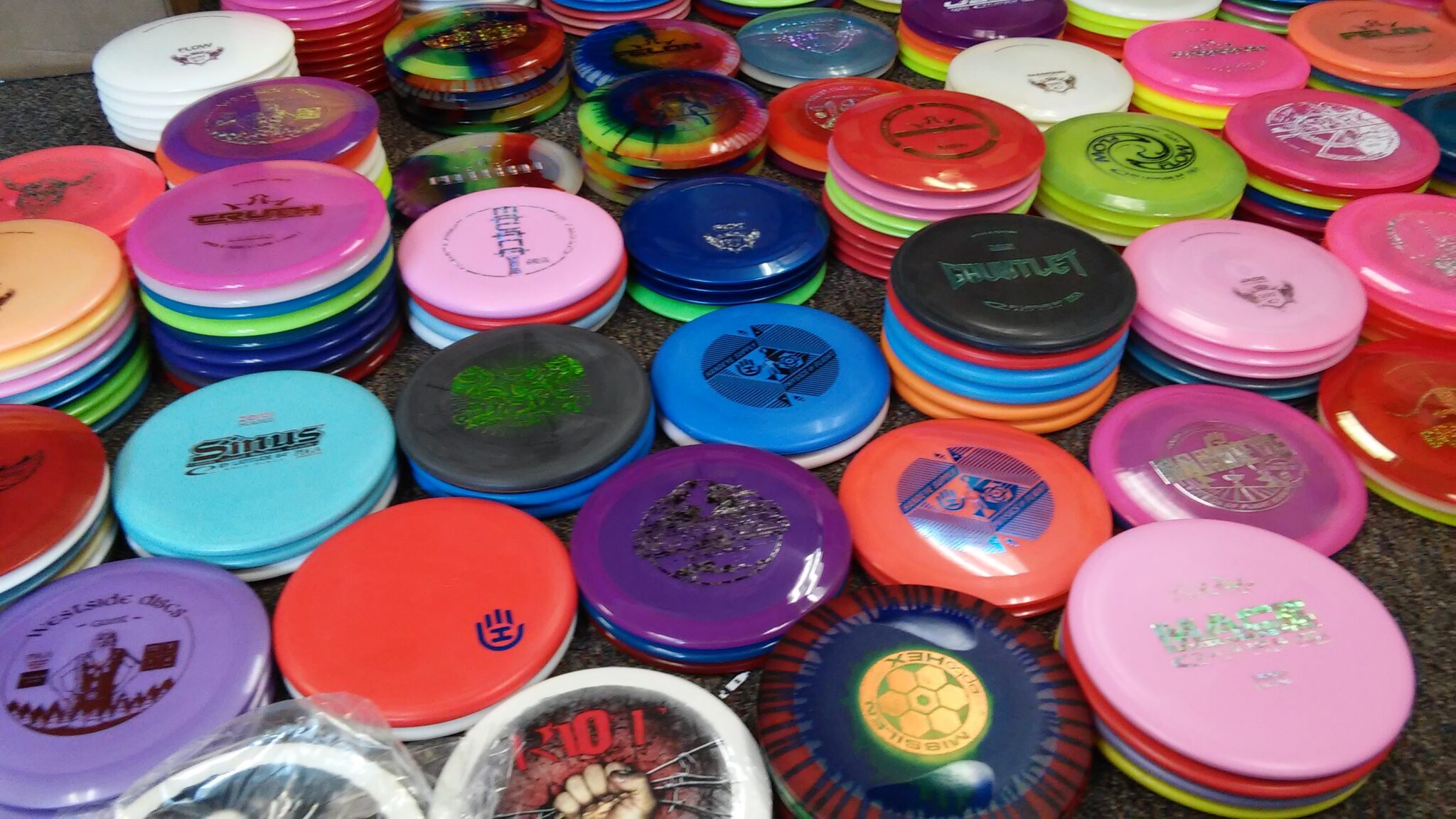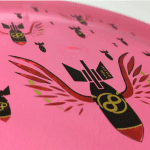Nearly every PDGA tournament has them, the self-proclaimed PDGA police who know every rule about disc golf. Today we are putting it to the test; are the rules they are citing fact, or are they fiction?
This Q&A is in no way, an official representation from the PDGA. This myth busting is according to our researched interpretation of the PDGA rules. If you have thoughts to add, we’d love to hear them below, unless you are simply an angry troll. If you have a tendency to be a troll, find a different way to present your thoughts, and then present them.
#1 You Must Use A Mini Marker to Mark Your Lie
(To clarify, this question is asking if you must use a mini to mark your lie, prior to your next throw).
Both.
You may leave your previous throw on the ground and treat that as your lie, so long as it meets the following criteria: the disc naturally fell in a definite position, it is not elevated, and no casual relief is needed (Rule 802.03-B). If your disc did fall into any of that criteria, you must mark your lie. You may choose to mark your lie if your lie is in bounds, but within one meter of out of bounds.
Essentially, most throws will likely not require a mini to mark your lie. However, using a mini may be to your advantage, and you will need one of you have a throw that goes out of bounds. Therefore it is a good idea to bring a mini marker disc to your next tournament.
#2 Fact or Fiction: You cannot throw from out of bounds.
Fact.
You must have all supporting points in-bounds (Rule 802.04-B-3).
#3 Fact or Fiction: When you mark your lie, the object used must be a mini marker disc.
Fact.
The wording on this can be a bit confusing, as the the rules state “a mini marker disc may be used” (802.03-B, emphasis added). The word may is in reference to if you need to drop a mini at all, or use the original disc as the lie. All other language in the PDGA rule book states “mini marker disc” for when marking your lie with an object may be necessary.
#4 Fact or Fiction: Your feet cannot come off the pad when you are teeing off.
Fiction.
The rule states “Supporting point contact outside the teeing area is allowed if it comes before or after, and not at, the moment the disc is released” (802.01). The question, however may need additional clarity. Your supporting points must be in bounds during the release. That means that a run-up which takes you off of the tee-pad is OK. It also means that one foot may be off the ground, in front of the tee-pad, so long as the disc is released before that foot comes into contact with the ground.
Disc golf may need instant replay to properly rule this one. Until that is allowed, if a supporting point is outside of the tee-box during release, it will have to be called by somebody other than the thrower (802.04 E and F).
This also means that if you don’t like where the tee-pad is located, you cannot tee of from the side of the pad.
#5 Fact or Fiction: It is impossible to foot fault on a drive.
Fiction.
See answer immediately above.
#6 Fact or Fiction: You may call a foot fault on yourself.
Fiction.
There was a time when this was true. However, because a foot fault may work to your advantage on an errant throw, it is not allowed to call a foot fault on yourself (8020.04 E).
#7 Fact or Fiction: You must allow those further away from the basket to putt first
Fact.
The away player throws first. However, “To facilitate flow of play, a player who is not the away player may throw if the away player consents.” (801.05 D).
If a player throws out of turn, without consent of the away player, it may be called a courtesy violation.
#8 Fact or Fiction: Do you have to tee off by lead score?
Fact.
If you play out of turn, it is considered a courtesy violation. Contrary to the “away player” where a player may consent to allowing another to throw first, the tee off order has no such courtesy allowed.[/learn_more]
#9 Fact or Fiction: A player that does not hole out (finish a hole) gets an automatic 7
Fiction.
A penalty applies, but it depends on the players intention.
Intentionally did not hole out: It is considered withdrawal from the tournament (803.03.G.3)
Unintentionally did not hole out: It is the number of strokes made, plus three penalty strokes. For example, if you forget to place your disc in the basket on a 1 foot putt. One stroke for holing out, and two for the misplayed hole.
#10 Fact or Fiction: If you lazily throw a disc back to your bag, for convenience, that’s a one stroke penalty”
Unclear.
1: The PDGA defines a throw as: “The propulsion of a disc by a player that results in a new lie.” (800.02)
2: In the PDGA Q&A, the PDGA says: “You can throw it with your foot if that works for you. Note: That also means that kicking the disc can be penalized as a practice throw. Applicable Rules: 800 Definitions (Throw).” (Q&A, Q29)
3: The PDGA Q&A also says: “The throw begins when movement of the disc in the intended direction begins. A disc dropped or knocked out before or during a backswing does not count as a throw.”
Our call is that this needs additional clarity. There are a number of arguments that can be made citing these two examples. The argument I’ll be using “But Tournament Director, I intended to throw towards the basket, not the pond.”
#11 Fact or Fiction: If a player lands in casual water he MUST play it from that position.
Fiction
“A player may obtain relief only from the following obstacles that are on or behind the lie: casual water, loose leaves or debris, broken branches no longer connected to a tree, motor vehicles, harmful insects or animals, players’ equipment, people, or any item or area specifically designated by the Director before the round.” (803.01-B)[/learn_more]
#12 Fact or Fiction: If your disc is in a tree and is not retrievable you get penalized a stroke.
Fact & Fiction
If the disc is retrievable or not is not a factor here; whether the two meter rule is in play, and if your disc came to a rest above the two meters is the only factor.
#13 Fact or Fiction: If you tie with somebody on a hole, the order of play is changed, in favor of the player with no penalty throwing first.
Fiction
The only factor in determining order of play is the score. The order of play rules say nothing about factoring penalty strokes into the equation. (801.05)
#14 Fact or Fiction: A player must write his totals and initial on his or hers scorecard before turning it in.
Fact
“At the end of the round, each player shall sign the scorecard to attest to the accuracy of the score on each hole as well as (805.02.F) the total score.”
#15 Fact or Fiction: When within 10 meters of the basket you can fall to the side, but not towards the basket
Fact
This is demonstrated in the PDGA Rules School Video “Rules School – Demonstrating Balance – Putting”. Forward to the 1:40 mark which is example A-1.
#16 Fact or Fiction: Players must watch a fellow group member’s throw.
Unclear
“Players should watch the other members of their group throw in order to aid in locating errant throws and to ensure compliance with the rules” (801.04.B, emphasis added).
The language the PDGA uses is “players should…”, not must. The rules then go onto further explain that a player who refuses to help search for a lost disc would incur a courtesy violation (801.04.D). Therefore, if watching the flight of a disc, or watching the players performance to monitor any breaking of rules is expected of players, then a repeat courtesy violation offender may be justified penalty. While debatable, this rule seems to ultimately encourage players to be actively involved with their groups tournament play. If you are oblivious of others actions, it should incur you a penalty for repeat offenses. Will it? That may be up to the tournament director.
#17 Fact or Fiction: You incur a penalty for landing in the wrong basket.
False.
“Wrong Target. The player has holed out on a target that is not the target for the hole being played. If no subsequent throw has been made, play continues from the resulting lie.” (803.03.G.2).
Essentially, the player has been penalized enough by playing to the wrong basket. They then continue their play to the correct target, totaling all strokes taken to hole out at the correct hole.
If a player played to the wrong basket, and has then teed off for the next target, a two stroke penalty is incurred. It would seem most logical that a “Failure To Hole Out” penalty would apply (which adds three strokes of penalty), but the rules explicitly state that it is a two stroke penalty.
#18 Fact or Fiction: Discs which land on top of the target are considered in.
False.
This is one of the most discussed, and should not be debatable at this point; however, new players enter the sport daily, and many-a-player have seen discs come to rest atop the basket, so it is a worthy question.
“The disc and it must come to rest supported by the chains and/or the inner cylinder (bottom and inside wall) of the tray. It may be additionally supported by the pole.” (802.05.A)
#19 Fact or Fiction: A single blade of grass under your disc, qualifies it as in bounds.
False.
An object which is connected from in bounds, towards out of bounds, does not make everything under the object in bounds.









